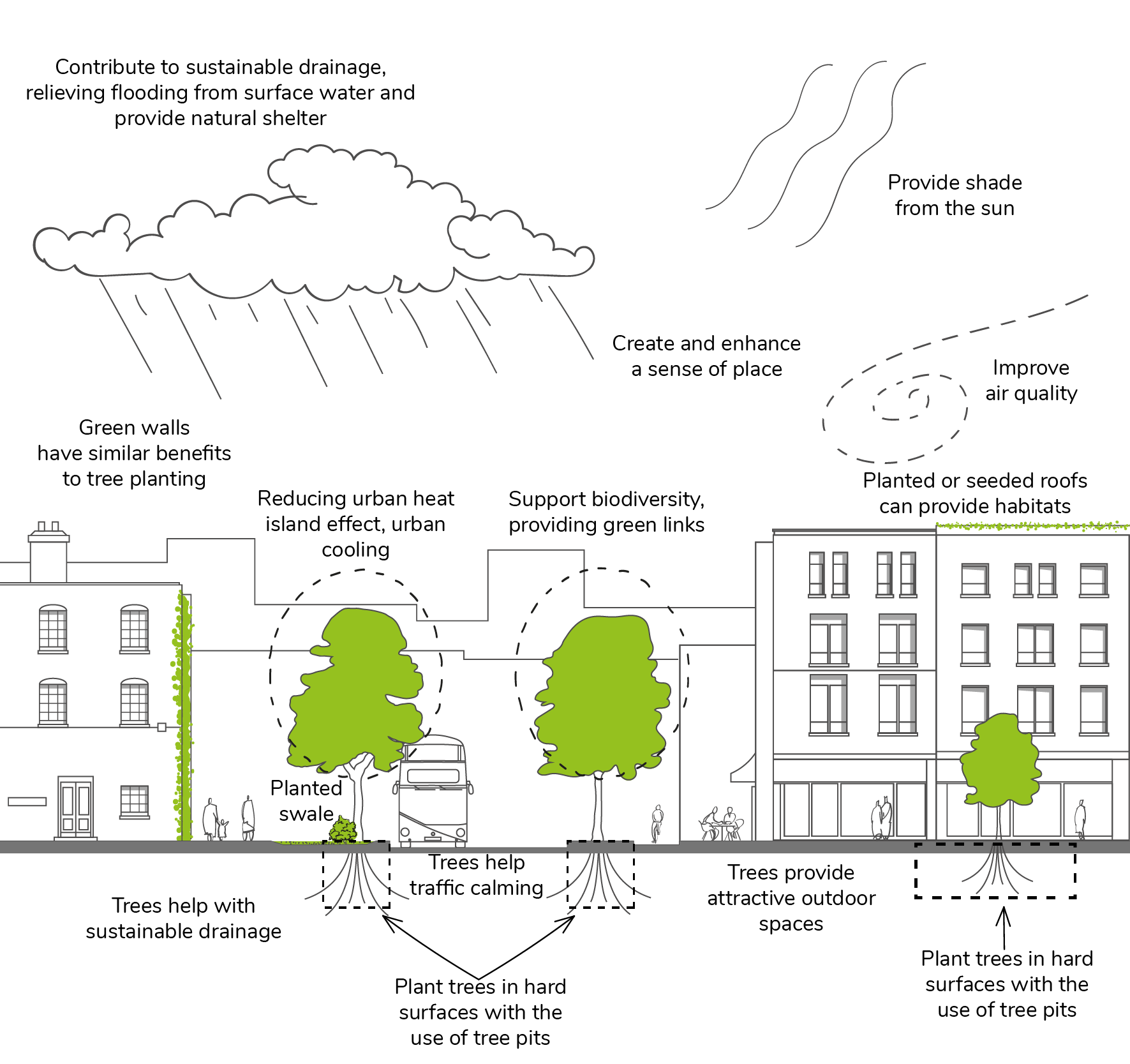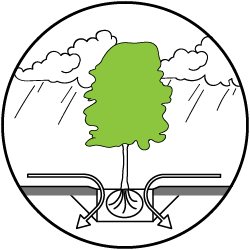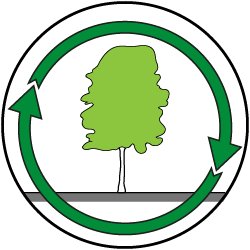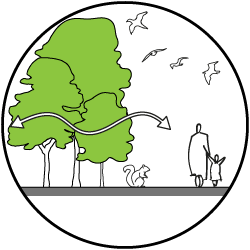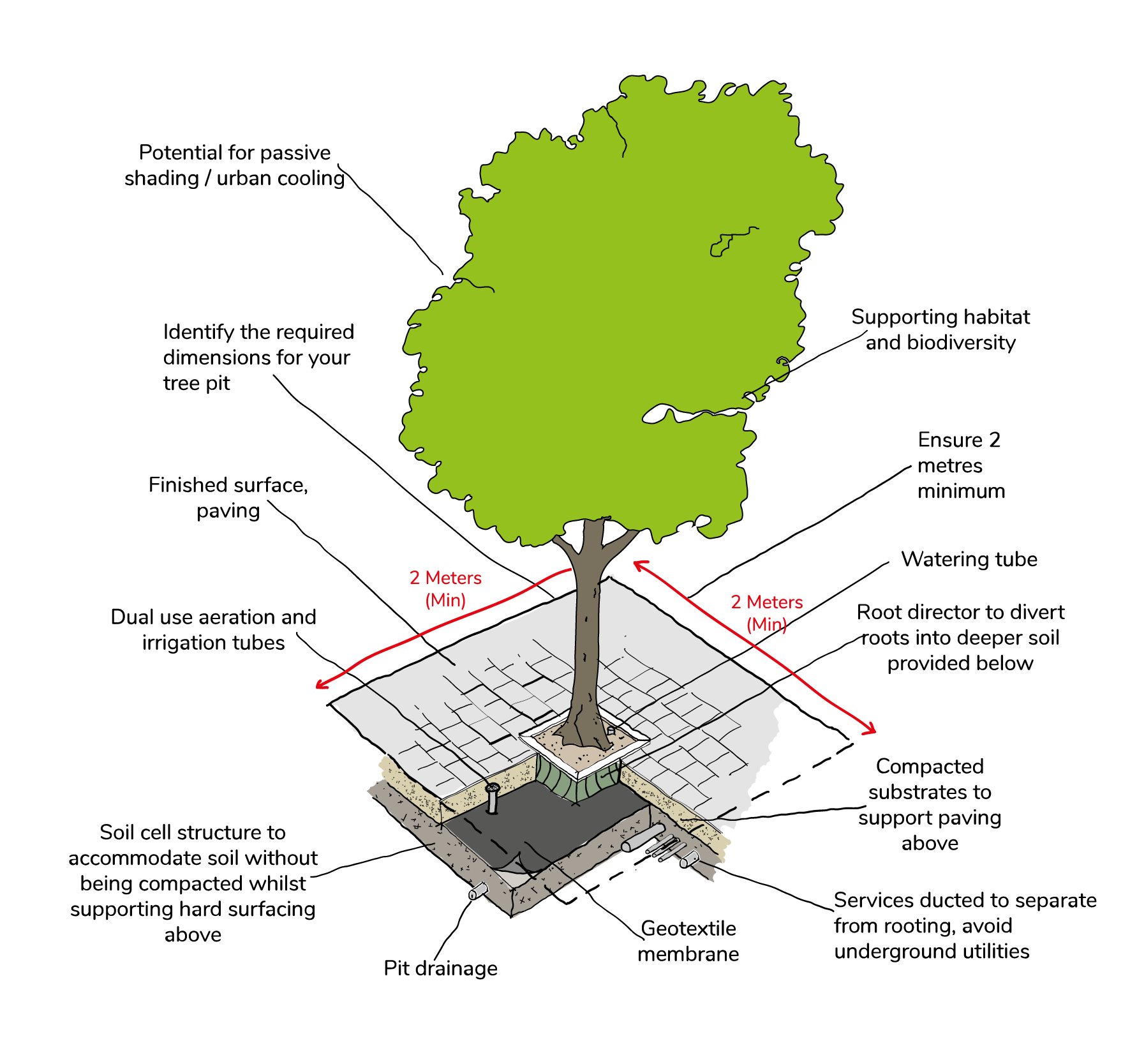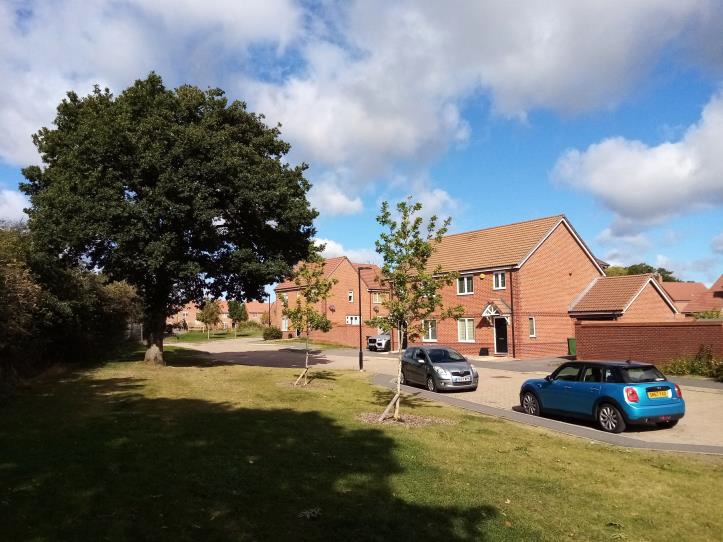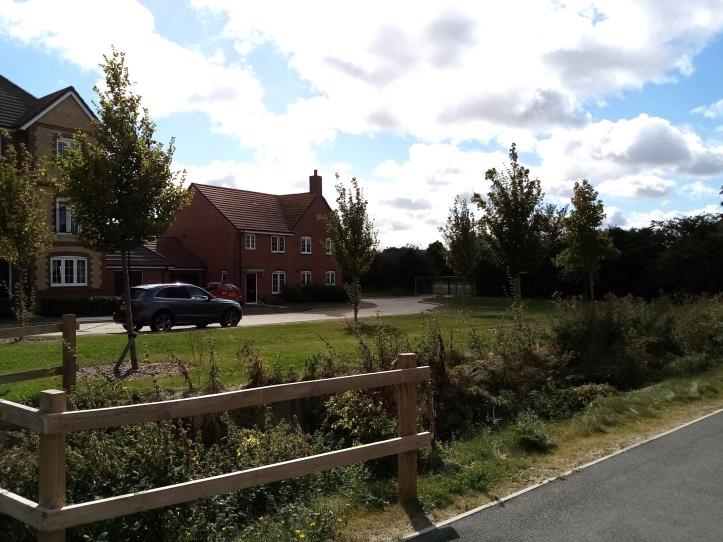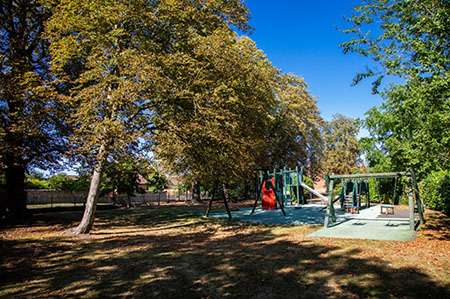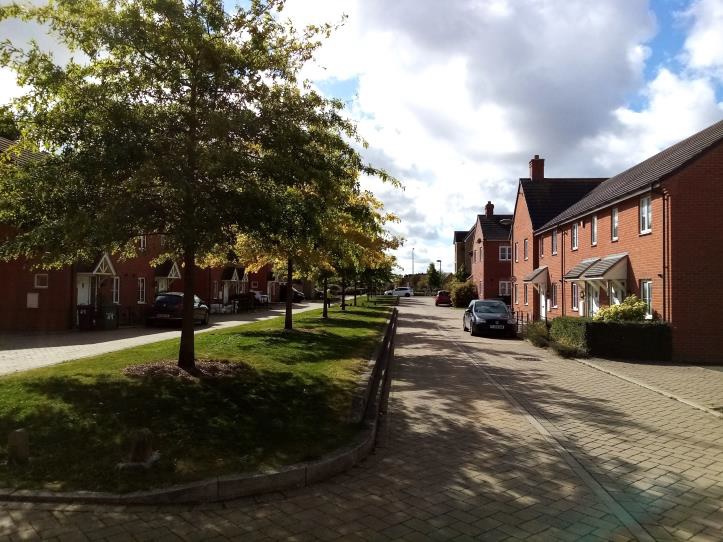Make sure:
- New planting including trees are designed appropriately into the layout. This should be explained in the landscaping strategy, and where applicable, complete and submit the following documents with your application:
- a topographical survey;
- a Tree Survey in accordance with BS 5837
- an Arboricultural Impact Assessment produced in accordance with BS 5837;
- an Arboricultural Method Statement, including a Tree Protection Plan in accordance with BS 5837
- all landscaping is designed in coordination with all other above and below infrastructure, including utilities, visibility splays, highway layouts, drainage, etc.;
- the planting scheme including tree planting scheme uses a range of species and sizes, appropriately spaced to correspond to the nature and hierarchy of the street or open space and suited to the site’s soil type. A mix of species is required with no more than 20% of any genus and no more than 10% of a particular species on the site. This is to improve the biosecurity, wayfinding, and seasonal interest;**
- the scale of planting should also relate to its potential function as mitigation for landscape impact. Tree planting should be of a scale to grow above roof lines to break up areas of development and to help assimilate development into the landscape setting;
- a landscape management plan has been prepared and submitted which explains the aftercare and maintenance programmed for the landscaping.**
